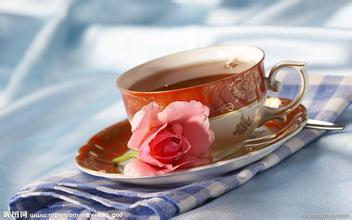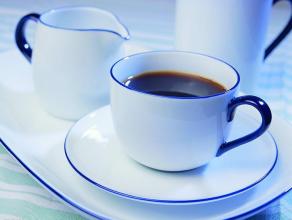Characteristics of several major coffee producing areas in Ethiopia introduction of varieties describing the flavor of manor beans
Ethiopian coffee bean flavor description taste
Yilu Babo (bulk commercial bean producing area): altitude 1350-1850 | Forest / semi-forest coffee system |
This area is located in the west of Ethiopia, bordering Sudan, and is the most convenient producing area in the west. the complexity of coffee gene is only second to that of Kafa forest, beans are obviously larger than those of Yegashifi and Sidamo, low acidity, good viscosity and balanced flavor. Most of the coffee here is transported to Jinma to be mixed, rarely sold independently.
Jinbi, Liechuti (major commercial bean producing areas): 1500-1800 above sea level | Forest / semi-forest coffee system |
There are sun-washed and water-washed beans in this area, long-bodied beans similar to Hara, and a few boutique grades are quite popular in Europe and the United States. Most of the Hara, known as the poor, has a sour and fruity flavor due to Yilu Babo, with a bright flavor.
Tiebi, Bebeca (bulk commercial bean producing area): 500-1900m above sea level | Pastoral / forest / semi-forest coffee system |
The two producing areas are very close. Tiebi has an enterprise-managed coffee plantation in the north of Bebeca. In recent years, it has promoted the pastoral system and increased farmers' income, with an annual output of about 3000 tons. Both places have wild coffee, the yield is not high, the flavor is very different from Hara and Yega snow coffee, low acidity is the biggest feature, suitable for formula beans, sun and water washing.
Tana Lake (alternative production areas): 1840 meters above sea level | Forest system |
Monastery coffee, the annual output of the surrounding forest coffee is very small, less than 10 tons, in fact, can not be called the producing area, the lake area is full of Orthodox monasteries, churches, religious murals and myths, creating the most "divine" coffee in the world.
Although the Ethiopian Yirgacheffe coffee is petite, it is gentle and delicate and sweet. As the hometown of coffee, thousands of years of planting history and processing tradition in Ethiopia have created high-quality washed Arabica beans. Light baking has unique sweet aromas of lemon, flowers and honey, soft acidity and citrus flavors, fresh and bright on the palate. No milk or sugar, let the rich texture and unique soft flower scent brush your taste buds, leaving an endless aftertaste.
Yega Xuefei is a small town, 700-2100 meters above sea level, synonymous with Ethiopian boutique coffee. It has been a wetland since ancient times. The ancient saying "Yirga" means "settle down" and "Cheffe" means "wetland". The mode of production and flavor of coffee here is so outstanding that Ethiopian coffee farmers compete to be proud of the flavor of their coffee, making it the most famous coffee producing area in Africa.
At first, Yejassefi's coffee trees were planted by European monks, and later by farmers or cooperatives. Yega Xuefei is actually constructed by the surrounding coffee communities or cooperatives, including: Hafusha, Hama, Biloya.
These mountain villages are foggy, like spring all year round, with a gentle breeze in summer, cool but not hot, rain but not damp, and no cold damage in winter, giving birth to a unique regional flavor of citrus and flowers. Coffee trees are mostly planted in farmers' backyards or mixed with other crops in the field.

Important Notice :
前街咖啡 FrontStreet Coffee has moved to new addredd:
FrontStreet Coffee Address: 315,Donghua East Road,GuangZhou
Tel:020 38364473
- Prev

Introduction to the producing areas of grinding degree varieties by the method of flavor characteristic treatment of Brazilian Hilado coffee beans
Brazilian coffee beans if you are taking harvest coffee cherries ripe long-awaited sister rarely for many days is a mature change, the new stage has no meaning. Be careful not to get rid of beans just ripe persimmons ripe down, leaving less damage caused by the coffee tree harvester vibration. 2 hand-picked coffee beans hand-picked mature coffee beans in the coffee treatment Serrado is harvested from
- Next

Introduction to the characteristics of Manor Flavor Grinding scale of Bourbon Coffee beans
Boutique coffee bean bourbon "Bourbon" bourbon is an ancient and excellent variety juxtaposed with iron pickup, and some botanists believe that bourbon is an early variety of iron pickup transplanted to Yemen. Bourbon is almost all round beans, beans are a little smaller than tin card, ripening later, but the yield is 30% more than tin card. It is suitable for planting above 1200 meters above sea level, and its flavor is obviously more prominent than those below 1000 meters.
Related
- Detailed explanation of Jadeite planting Land in Panamanian Jadeite Manor introduction to the grading system of Jadeite competitive bidding, Red bid, Green bid and Rose Summer
- Story of Coffee planting in Brenka region of Costa Rica Stonehenge Manor anaerobic heavy honey treatment of flavor mouth
- What's on the barrel of Blue Mountain Coffee beans?
- Can American coffee also pull flowers? How to use hot American style to pull out a good-looking pattern?
- Can you make a cold extract with coffee beans? What is the right proportion for cold-extracted coffee formula?
- Indonesian PWN Gold Mandrine Coffee Origin Features Flavor How to Chong? Mandolin coffee is American.
- A brief introduction to the flavor characteristics of Brazilian yellow bourbon coffee beans
- What is the effect of different water quality on the flavor of cold-extracted coffee? What kind of water is best for brewing coffee?
- Why do you think of Rose Summer whenever you mention Panamanian coffee?
- Introduction to the characteristics of authentic blue mountain coffee bean producing areas? What is the CIB Coffee Authority in Jamaica?

